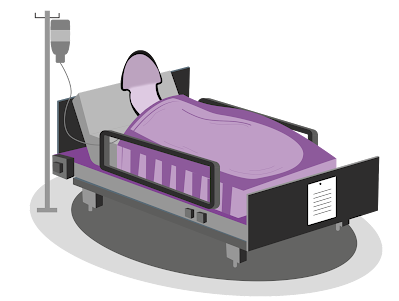Exploring the Spectrum: A Comprehensive Analysis of Premature Ejaculation Types
Premature ejaculation (PE) is a very common sexual dysfunction that affects a significant number of men. While often viewed as a one-size-fits-all condition, Premature ejaculation (PE) actually encompasses a spectrum of types, each with its own distinct characteristics, causes, and potential treatments. In this comprehensive analysis, we delve into the various premature ejaculation types, shedding light on their nuances and exploring potential strategies for managing and overcoming this condition.
Types of Premature Ejaculation
- Lifelong Premature Ejaculation (LPE):
LPE refers to a form of PE where a man experiences rapid ejaculation since his first sexual experience. This type is often attributed to psychological factors, genetics, or neurobiological differences.
- Acquired Premature Ejaculation (APE):
APE manifests as a sudden onset of PE in a man with a previously normal ejaculation pattern. It is frequently associated with psychological stressors, relationship issues, or medical conditions.
- Variable Premature Ejaculation (VPE):
VPE involves inconsistent patterns of ejaculation timing, with instances of both rapid and normal ejaculation. This type may be linked to factors such as anxiety, performance pressure, or fluctuating hormone levels.
- Subjective Premature Ejaculation (SPE):
SPE occurs when a man perceives his ejaculation time to be premature, regardless of the actual duration. This type highlights the psychological aspect of PE and emphasizes the importance of communication between partners.
Causes and Contributing Factors
Psychological Factors: Anxiety, stress, performance anxiety, and depression can play a significant role in various PE types. Addressing these underlying psychological factors through therapy or counseling can lead to significant improvements.
Biological and Neurobiological Factors: Differences in neurotransmitter levels, serotonin regulation, and penile sensitivity might contribute to certain PE types. Medications targeting these physiological factors could offer potential solutions.
Relationship Dynamics: Issues within a relationship, communication problems, or unresolved conflicts can lead to APE or exacerbate other types. Couples therapy and open communication can help alleviate these concerns.
Hormonal Imbalances: Fluctuations in hormone levels, such as thyroid dysfunction or abnormal testosterone levels, might influence VPE. Hormone therapy could be considered in such cases.
Diagnosis and Treatment Approaches
Medical Assessment: A thorough medical evaluation is crucial to identify any underlying medical conditions, hormonal imbalances, or medications that might be contributing to PE. This assessment guides the treatment plan.
Behavioral Techniques: Techniques such as the "stop-start" method or the "squeeze" technique aim to delay ejaculation and enhance ejaculatory control. Regular practice can lead to improved ejaculatory management.
Psychological Therapy:
Cognitive-behavioral therapy (CBT), mindfulness, and sex therapy can help address psychological factors triggering PE. These therapies empower individuals to manage stress, anxiety, and performance-related concerns.
Medications: Depending on the type of PE, medications like selective serotonin reuptake inhibitors (SSRIs) or topical anesthetics might be prescribed to prolong ejaculation time. However, their usage should be carefully monitored.
Lifestyle Modifications: Incorporating a healthy lifestyle with regular exercise, a balanced diet, and stress reduction techniques can have a positive impact on various PE types.
Communication and Support
Open Dialogue: Partners play a crucial role in the management of PE. Open and empathetic communication can reduce performance anxiety and improve emotional intimacy.
Couples Therapy: Involving both partners in therapy sessions can help address relationship issues, enhance communication, and foster a supportive environment.
Conclusion
Premature ejaculation is a nuanced condition with various types, each influenced by a combination of psychological, physiological, and relational factors. Understanding the distinct characteristics of these types enables individuals and couples to seek appropriate PE treatments and interventions that align with their specific situations. By embracing a holistic approach that encompasses medical, psychological, and lifestyle aspects, individuals can work towards managing and overcoming premature ejaculation, ultimately improving their sexual well-being and overall quality of life.




Comments
Post a Comment